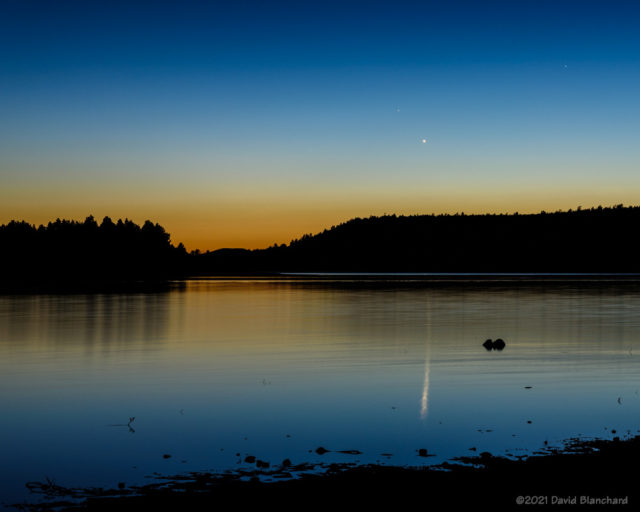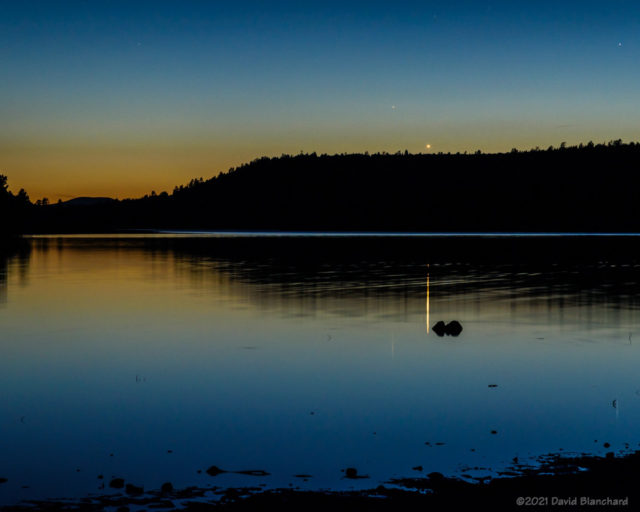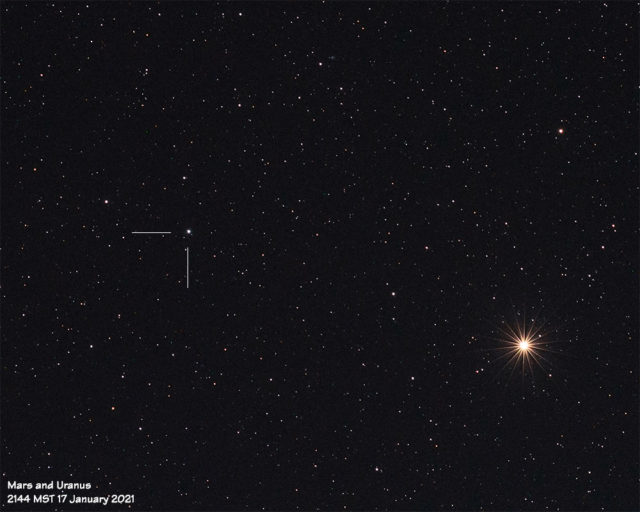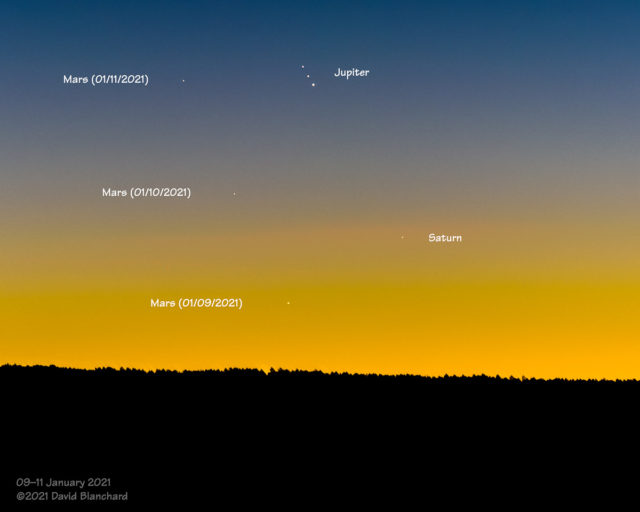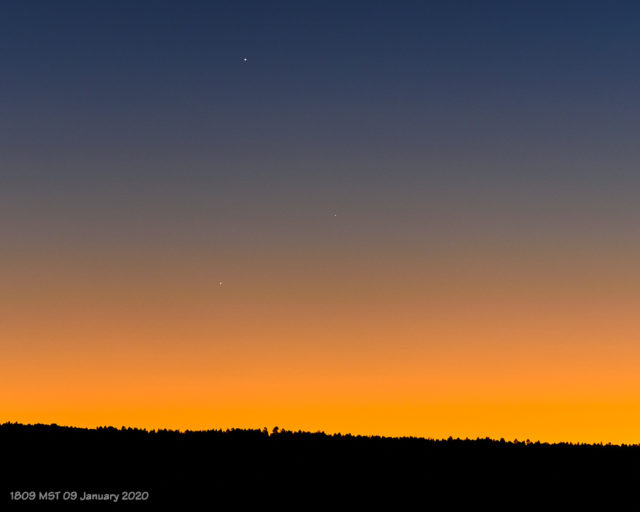A few days ago, the thin crescent Moon passed close to the planet Venus in the evening twilight sky. Conjunctions such as this repeat at roughly one-month intervals so this is not a rare occurrence—just a beautiful one.

The crescent Moon is ~2.4% illuminated by the direct light of the Sun; the remainder of the Moon is lit by Earthshine which is bright enough to show detail on the shadowed face of the Moon. Leonardo da Vinci explained the phenomenon in the early 16th century when he realized that both Earth and the Moon reflect sunlight at the same time. Light is reflected from Earth to the Moon and back to Earth as earthshine.
